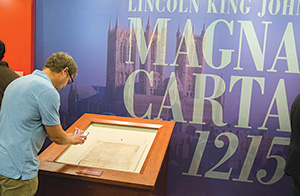By Jacob Fischler
(Law360, Washington)
U.S. Securities and Exchange Commission filings are not considered public disclosures for the purposes of the California False Claims Act, a state appellate court ruled Tuesday, reviving a case accusing country club chainClubCorp of withholding unclaimed initiation deposits.
A three-judge panel for California's Second Appellate District said the public disclosure rule, which bars qui tam CFCA cases based on public information, is only triggered if the disclosure occurs in forums explicitly referred to in the state statute. Therefore, relator Robert G. Bartlett’s suit was not torpedoed by ClubCorp’s acknowledging the issue in SEC filings.
Under state law, only public disclosures in a criminal, civil or administrative hearing, a report by a legislative or municipal body or one by the news media trigger the CFCA public disclosure bar, the panel said. Disclosures to federal authorities — like SEC filings — do not rise to that level, the panel said.
“State officials may be unaware of information disclosed solely to or by the federal government; and a relator with information about a state or local fraud, even if that misconduct has been publicly disclosed in a federal forum, may still be making a valuable contribution to state or local authorities that is properly rewarded under CFCA,” Presiding Justice Dennis M. Perluss wrote for the unanimous panel.
The trial court and the state — which had argued that SEC filings were public disclosures under the CFCA — relied too heavily on the federal False Claims Act, the panel said. Although the statutes embody similar goals and practices for accomplishing them, the federal law could not substitute for the state version in sections where their language is not mostly similar, the panel said.
Bartlett sued the country club company and three of its managerial employees in September 2011 for tort-related claims based on a Los Angeles-area club's terminating his membership and refusing to refund a $7,500 initiation deposit he had paid to join, according to the opinion. He amended the claim the next year to include CFCA claims alleging that the club kept such unclaimed deposits, knowingly defying its obligation to turn over to the state millions of dollars in escheatments related to the deposits.
The panel sympathized with the state, Justice Perluss said, as it had begun investigating whether ClubCorp’s California clubs owed the escheatments in 2008 and Bartlett’s suit could not have added much value to that investigation. Bartlett was in a position to reap the rewards of bringing the qui tam action without offering any benefit in return, he said. However, the state investigation had not been publicly disclosed and therefore was irrelevant to the CFCA action, he said. Representatives for Bartlett, ClubCorp and the state did not return messages seeking comment Tuesday.
Bartlett is represented by Don Howarth, Suzelle M. Smith and Jessica L. Rankin of Howarth & Smith and Russell L. Berney of Berney Law Corp.
ClubCorp is represented by Thomas F. Carlucci of Foley & Lardner LLP.
California is represented by Kamala D. Harris, Martin H. Goyette, Frederick W. Acker and Courtney Towle of the California Office of Attorney General.
The case is State of California ex rel. Robert G. Bartlett v. Gene Miller et al., case number B259472, in the Court of Appeal of the State of California, Second Appellate District, Division Seven.












